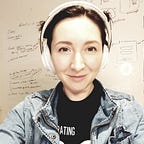What to ask earlyvangelists?
From structuring an interview to lessons learned on running interviews
Customer development teaches us to run interviews early in the product development cycle. While Value Proposition Design canvas provides customer profile tool for structuring the interview.
One of the early evangelists had helped me to get potential users to talk me. The screener had filtered half of them, some didn’t respond to confirm an interview.
That was an early lesson learned. Be prepared that half of the users won’t confirm or show up for an interview.
There is a practice to offer incentives to users during user research. In my specific case — I don’t offer incentives. I don’t just run “user research”, I am developing customers and validating hypothesis.
I need to check whether a potential market is in so much pain, that people are advocating and searching for pain relievers with no incentives offered. These are — my early-evangelists.
Generally, a person who is self-registered to an interview is very excited. The trick is to schedule the interview as fast as possible, but at the convenient time for the user.
Another point to keep in mind — a channel of communication. All of my interviewees are busy moms staying at home with their kids. It’s easier for them to hop on the call, so all of them were interviewed online.
Initially, I thought to use Skype, but it turned out — moms don’t use Skype! But they do use Facebook messenger. So, I have switched to the later to accommodate to my users’ preferences.
It’s fascinating how much I can learn about my users’ habits while preparing for an interview with them. By knowing their channels of communication I know, now, how to effectively get them exposed to a solution I am designing for them.
Another a housekeeping task— make sure that you remind the user for the upcoming interview in a day, so you can proactively offer to re-schedule it if needed.
It was painful just wait for a user, who had never shown up…
Be proactive, engage early and offer options — when and where is convenient for a user to be interviewed.
I had one potential interviewee, I had connected with her on Facebook, quickly explained the project goal and asked is she is interested. She said yes.
But based on our discussion I felt she is hesitant, and I wasn’t sure why she said yes…
If she feels uncomfortable about been interviewed, there is no point to run it. I won’t get a high quality discussion on the sensitive topic that I am researching — postpartum depression.
So, I have researched about her, and found out she in turbulent time — diagnosed with postpartum depression, recently divorced and then — been prohibited from breastfeeding her baby by.. justice system!
I have contacted her back and honestly said to her that I am sorry for her situation and wish her best, and I think, this is not a good time to run an interview.
Be a human — empathize and let go of that which is not working… The interview process is messy and needs patience.
And the last thing — what questions should I ask during customer development interview?
One of the motivations for me in this project is to practice — Business Model Canvas. For that reason, I have chosen a tool from “Value proposition design” — a customer profile.
The user profile is based on jobs-to-be-done, first, you describe what kind of jobs a user is doing in the specific domain you are researching, then you identify pains of the current way the users are doing it, and what gains they are seeking in a potential solution.
Well, you can’t ask users directly the questions that you need to answer in the customer profile. You need to translate them into the language your users understand.
In the context of asking moms about their postpartum experience I have mapped customer profile questions to the following that I have asked:
1. Customer jobs — Describe your birth and first 6 weeks of postpartum.
2. Pains — What didn’t work well, what problems you had, what was for you an unpleasant surprise
3. Gains — If you could back in time, what would you have done differently?(aka a magic wand from “Lean Customer Development”)
That’s it. And during the interview, it becomes apparent when to ask the next questions, or maybe phrase it differently to maintain a flow of a story the participants is telling.
A good interview is when it feels like a storytelling.
In a few numbers of the interviews, some occurrent themes will come into view. In a few more it seems like you can predict what happens next. And in a few more it feels more of a variation of an archetype story you have assembled from the users.
It will be that way, only in case you are interviewing one segment with common attributes and behavioral characteristics.
During interviews, I have discovered an another segment, that I needed to interview to complete an ecosystem of people that are involved in this domain.
Read the next post to know how to analyze and synthesize interviews to get prepared to ideation of possible solutions.
This is a post from series #productdesign where I practice product design and customer development.
Follow me to see product design journey from scratch.
